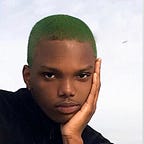The color Purple ❤
Watching the color purple is such a fascinating eye-opening experience, being able to be enlightened on life during the 1920s to 1940s for Black American’s was a privilege. These periods of segregation and intense racism are often left unspoken in mainstream media, politics, and academia so this was well deserved. The controversial film directed by Steven Spielberg was banned in schools in 1984 due to ‘graphic scenes,’ however, I feel like this was done as a way to dilute the harsh realities of racial bias and white supremacy it brings to the forefront. Themes such as slavery, patriarchy, racism, homophobia, and misogyny are prominent throughout the film but I believe the plot remains lighthearted while simultaneously addressing these very serious topics. It could have easily taken a demoralizing turn but there is an aura of hopefulness throughout the film, it is clear when Alice Walker wrote the book it was to recenter the narrative and bring it back into her own hands, as a black woman in a white society. I believe the film adaptation was a great tool for the black community to use to occupy space and affirm our place in society and place ownership over our own narrative.
The narrative structure of the film was extremely befitting for the context, with the main character being a 14-year-old girl Cecilie and the story being told from her perspective, it only made sense for her to be the one to narrate it, with her soft, melodious voice she explains each scene to the audience which helped give us insight on the contribution of each moment to her life story. It is amazing seeing how Celie grows from a younger child and eventually matures into a young woman who has gone through a lot of adversity but has been able to survive. The use of consistent symbolism throughout the film was a good way of keeping the audience in check, her letters to God, the purple cosmo flowers, and her letters to her sister were some of the prominent symbols. Through them, I got to see Celie’s persistence and strength as a Black woman who has to fight both problems of whiteness and patriarchy. The filming of the scenes is very intentional with the continuity during filming enhancing this “persistent” view of Celie and other characters. The audience gets uninterrupted views of the characters with the cameras constantly capturing them up close and from various angles, it gives the fly on the wall experience and makes the audience feel omnipresent in a realistic time and space. The jump cuts are also perfectly placed adding a sense of energy and suspense to the story being told, there is constantly something intriguing for the viewer to digest on screen, which is why I would say it’s a great film for “food for thought.”
The on-screen direction is also apt for the story, the locations Spielberg used in North Carolina were perfect when it came to giving off the nostalgic dewy vibe I would have expected that period to feel like and the way the characters interact with the space was extremely realistic. The shot angles being strategically placed were able to turn simple mundane everyday tasks like cooking, fieldwork, and singing into an interesting view. The use of dolly shots is often employed with the subjects moving away from the camera into the scene and placing themselves within the space. The type of directions in the film was perfect for stills and photos, the characters are often placed in ways that ensure they don’t get lost in the vast scenery and are still a large part of the narrative. This is why many of the shots could easily be beautiful still portraits. The characters are consistently captured in detail throughout the film which helps highlight their personalities more subtly, the only time’s details on the characters are lost is when the depth of field is larger to show a feature in the scenery in detail, such as the sun, the greenery, the animals, etc.
The Mise en scene was also exquisite in most scenes, they were able to make it look less staged and more realistic. The placement of all the furniture, housing, clothing, and props was extremely important when it came to highlighting the problems with eurocentrism and how whiteness has forcefully infiltrated black life. It’s nice watching a well-researched project on black history that does not leave the viewer confused or outright hopeless, rather the color purple gives us insight into how the societal problems which black people, most especially women and LGBTQ+ folk, have been subjected to are unjust and has been embedded in society through eurocentric values. However, with people like Celie, we are shown that resistance and refusal to conform to the status quo could be an adequate form of self-liberation even when your life is at risk and there seems to be no option out.
